 Seashells
Seashells
Identify It > Seashells >
If you've come back from the beach with knickers full of sand and pockets full of seashells then these photos might help you to identify some of your saltwater treasures.
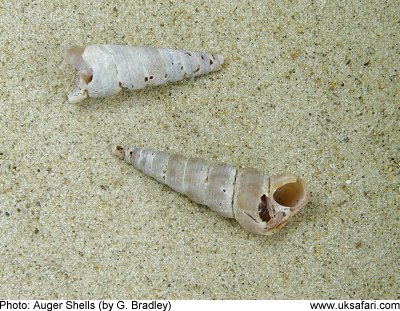
Auger Shell (Turritella communis). A sharply pointed spiral shell up to 55mm long. Usually on sandy beaches but scarce in English Channel.
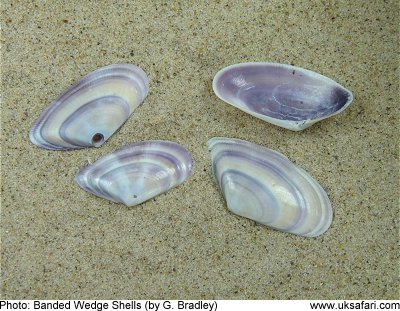
Banded Wedge Shell (Donax vittatus). Up to 35mm long. Colour varied from purple, yellow or orange. Common around the UK coast and often abundant on sandy beaches.
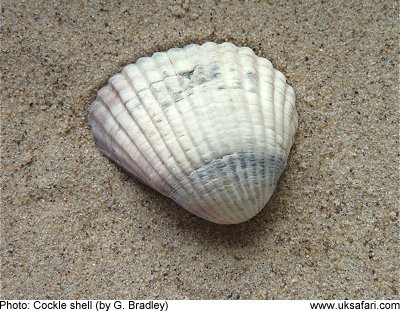
Common Cockle Shell (Cerastoderma edule). Commonly found around the UK coastline. Up to 40mm across with 24 raised ribs and visible raised growth rings. Pale brown to gret in colour and off white inside.
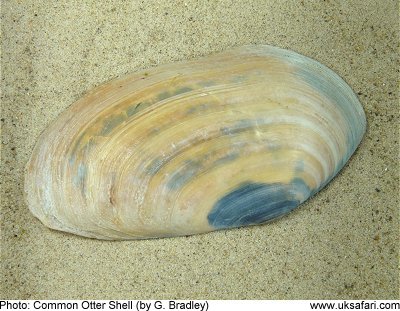
Common Otter Shell (Lutraria lutraria). Up to 130mm long. Commonly found around the UK coastline. Various shades of brown outside with fine concentric ridges. Off white inside. Lives offshore in deep mud.
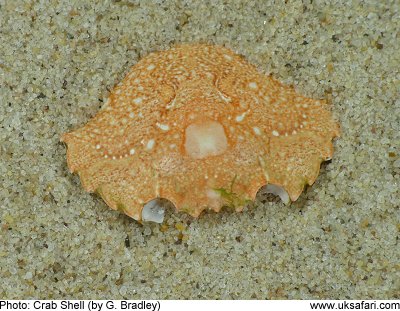
Crab Shell. Commonly found all around the UK coast. Sizes vary from 5mm to 250mm depending on the species.
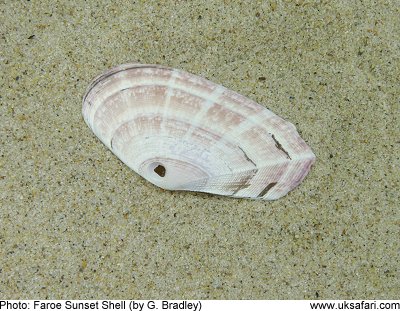
Faroe Sunset Shell (Gari fervensis). Like a lopsided cone, flattened on one side and of variable colour. Twice as long as it is deep. Up to 50mm long.
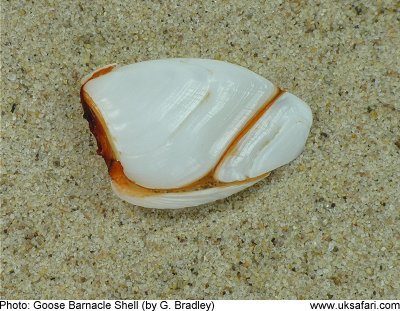
Common Goose Barnacle (Lepas anatifera). Up to 50mm long. Consists of a series of shiny white plates joined to gether with brown skin. More about Goose Barnacles here
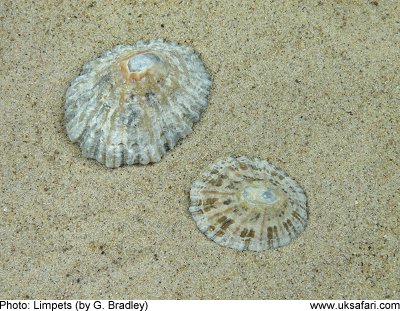
Common Limpet (Patella vulgata). Up to 60mm long. Conical shape with raised ribs running from top to bottom. Pale brown in colour usually with a white pointed tip. Inside the shell there are some short dark brown lines at the outer edge. More about Limpets here
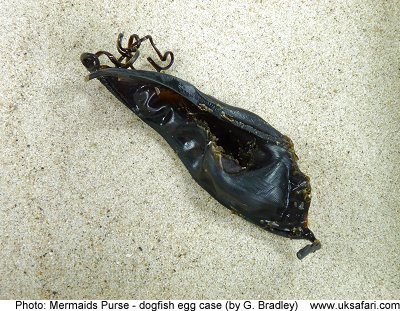
Mermaid's Purse. Not a shell, but the leathery egg capsules of skates, dogfish and rays. Length from 2 to 10cm long. Rectangular in shape with elongated tendrils at the corners which attach the capsule to seaweed or rocks.
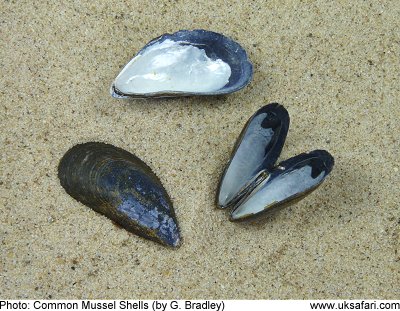
Common Mussel (Mytilus edulis). Colour is purple/black with a pearly white interior. Length from 1cm to 10cm. Abundant all round the UK especially on rocky coastlines. More about Mussels here
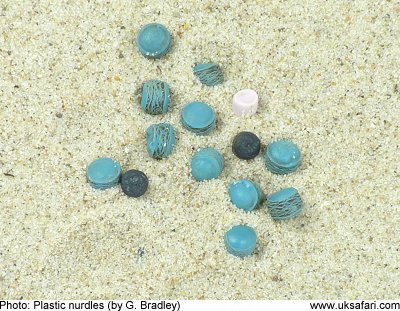
Nurdles - a man-made product used in the plastic industry. Almost every beach in the world is cursed with their presence. They're 5mm or less in length, they're litter, and a hazard to wild animals who regularly ingest them.
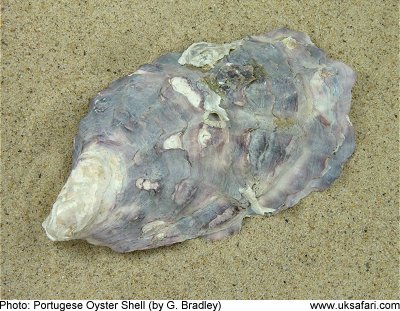
Portuguese Oyster Shell (Crassostrea gigas). Up to 300mm long. Can be oval or pear shaped. Very rough grey surface, and pearly white inside.
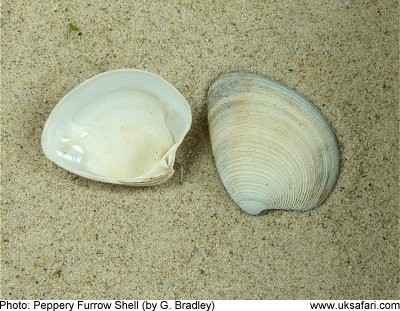
Peppery Furrow (Scrobicularia plana). Up to 65mm across. Grey-white colour with lots of fine concentric grooves. Shiny white and smooth inside.
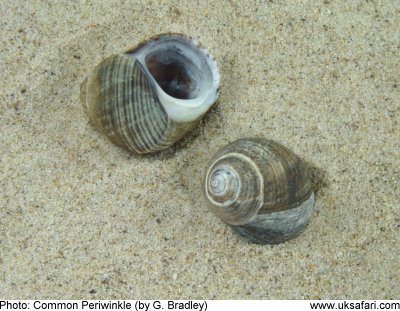
Common Periwinkle (Littorina littorea). Up to 30mm in length. Brown with a white lip.
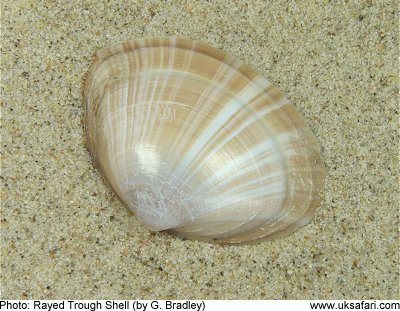
Rayed Trough Shell (Mactra stultorum). Up to 50mm in length. Fine concentric lines and radiating bands of orange-brown colour. Common all around the UK.
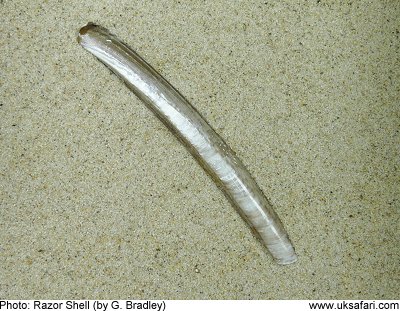
Common Razor Shell (Ensis ensis). Up to 130mm long. Cream and brown in colour.
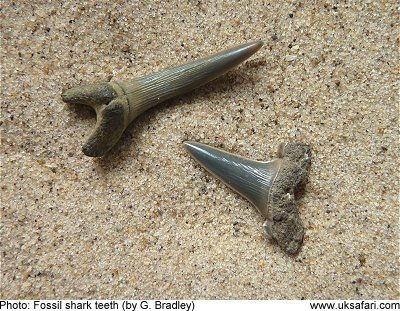
A shark's tooth, or in this case the fossil of a sharks tooth. Sometimes found around the UK coast. Sizes vary from 1cm to around 5cm.
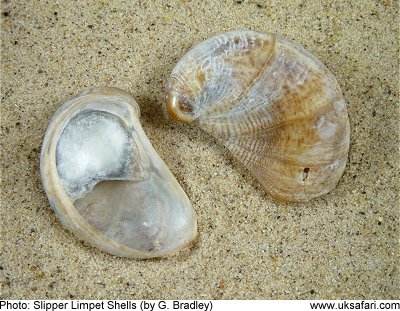
Slipper Limpet (Crepidula fornicata). Up to 40mm long. Almost semi-circular shape with prominent concentric lines. The colour can vary but usually has three wide orange-brown radiating bands. Common around the UK especially on sandy beaches.
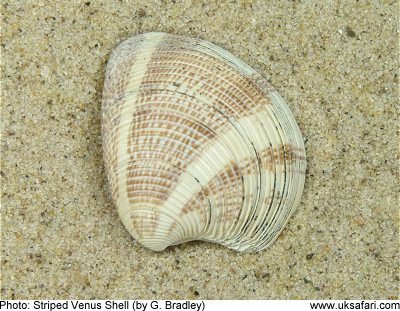
Striped Venus Shell (Chamelea gallina). Oval in shape, pink coloured on the outside and white inside. Size up to 50mm.
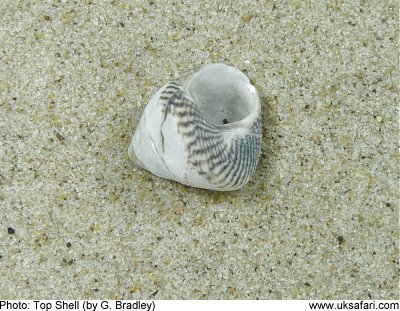
Grey Top Shell (Gibbula cineraria). Up to 15mm high with 5 or 6 whorls. Purple grey in colour.
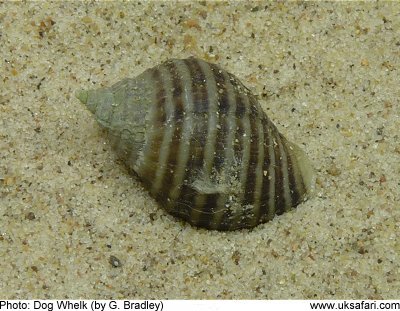
Dog Whelk (Nucella lapillus). Colour varies greatly. Usually grows to 30mm but can reach 6cm. The outer lip of the shell becomes thickened and toothed inside with age. Found all round the UK coast but more frequently on rocky coastline.
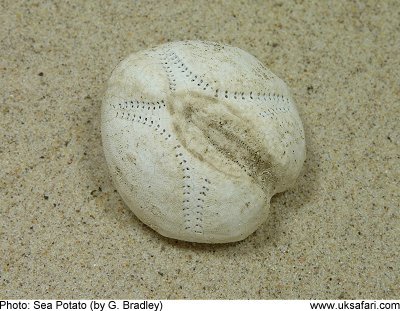
Sea Potato (Echinocardium cordatum). A type of heart-shaped sea urchin approx. 4cm across. Found all round the coast of the UK.
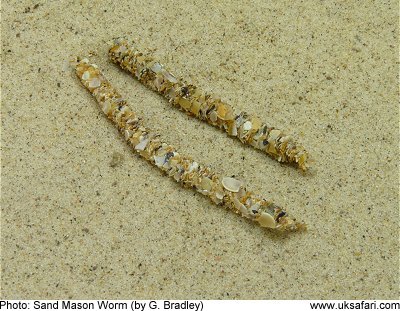
Sand Mason Worm (Lanice conchilega). The name comes from the impressive homes these worms build for themselves. It's constructed from bits of shell and sand cemented together with mucus. Up to 300mm long. Found all round the UK.
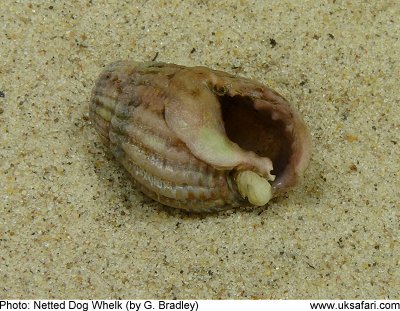
Netted Dog Whelk (Hinia reticulata). Quite a rounded shell up to 30mm long. The ribs are covered in spiral grooves to create a net-like pattern. The opening is finely toothed. Found all round the U.K.
NOTE: While it's okay to bring home a few empty seashells from your visit to the beach please don't be tempted to BUY seashells from shops.
Buying one seashell probably doesn't seem like a terrible thing, but when millions of people around the world think the same thing it has a massive impact on marine life. Tons of shellfish and other healthy, living marine wildlife gets harvested and killed every month (often illegally) to fuel this world-wide trade in marine curios. It's a huge industry and it's driving many species and habitats closer to extinction. Please, please, please don't buy them.

 Popular Pages
Popular Pages
Amphibians, Bats, Badgers, Beetles, Birds, Birds of Prey, Bumble Bees, Butterflies, Caterpillars, Creepy-Crawlies, Deadly Spiders, Dolphins, Dragonflies, E-Postcards, False Widow Spiders, Free Newsletter, Frogs, Fungi, Garden Spiders, Glow-Worms, Grey Squirrels, Hedgehogs, House Spiders, Ladybirds, Mammals, Marine Mammals, Moths, Owls, Reptiles, Spiders, Toads, Trees, Wildlife Hospitals
© Copyright 2017 G. Bradley - UK Safari | About Us | Links | Contributors

